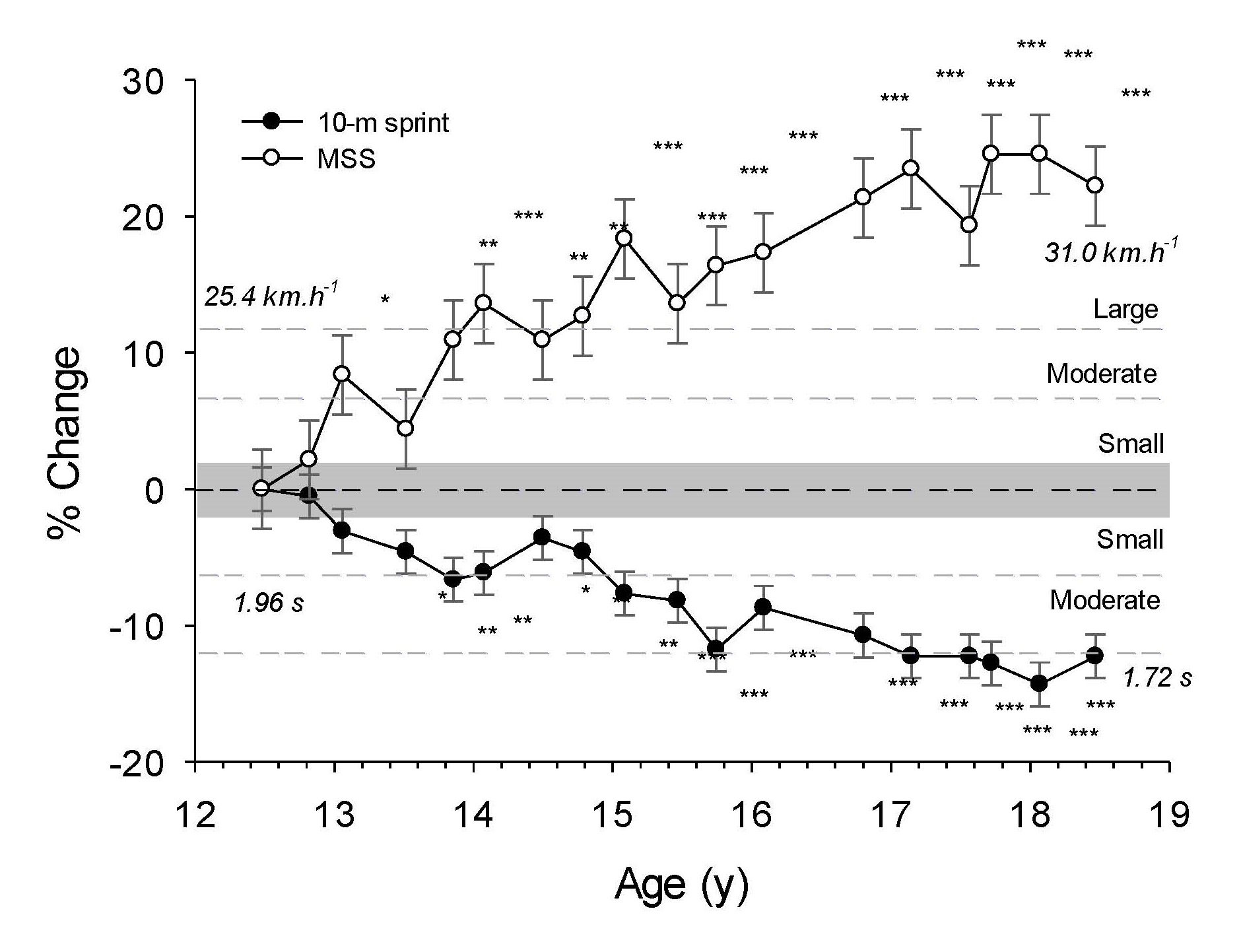Sprint running performance monitoring: methodological and practical considerations
Haugen T & Buchheit M. Sprint running performance monitoring: methodological and practical considerations. Sports Med 2015, In press
Full text here

Fig. Percentage changes in 10-m sprint time and maximal sprinting speed (best 10-m split during a 40-m sprint, MSS) in a well-trained young soccer player. Error bars represent the typical error of each variable (i.e., 1.6 and 2.9% for 10-m and maximal sprinting speed (MSS), respectively, Table 2). Details of the methods have been published elsewhere [34]. The grey area represents trivial changes. *: likely change, **: very likely change and ***: almost certain change. Multiples of the smallest worthwhile changes (SWC) were used to assess the magnitude of the changes based on Cohen’s effect size principle, where 1, 3 and 6 multiples of the SWC stand for small, moderate and large changes.
The aim of this review is to investigate methodological concerns associated with sprint performance monitoring, more specifically the influence and magnitude of varying external conditions, technology and monitoring methodologies not directly related to human physiology. The combination of different starting procedures and triggering devices can cause up to very large time differences, which may be many times greater than performance changes caused by years of conditioning. Wind, altitude, temperature, barometric pressure and humidity can all combine to yield moderate time differences over short sprints. Sprint performance can also be affected by the athlete’s clothing, principally by its weight rather than its aerodynamic properties. On level surfaces, the track compliance must change dramatically before performance changes larger than typical variation can be detected. An optimal shoe bending stiffness can enhance performance by a small margin. Fully-automatic timing systems, dual-beamed photocells, laser guns and high-speed video are the most accurate tools for sprint performance monitoring. Manual timing and single-beamed photocells should be avoided over short sprint distances (10-20 m) due to large absolute errors. The validity of today’s GPS technology is satisfactory for long distances (>30 m) and maximal velocity in team sports, but multiple observations are still needed due to questionable reliability. Based on different approaches used to estimate the smallest worthwhile performance change and the typical error of sprint measures, we have provided an assessment of the usefulness of speed evaluation from 5 to 40 m. Finally, we provide statistical guidelines to accurately assess changes in individual performance; i.e., considering both the smallest worthwhile change in performance and the typical error of measurement, which can be reduced while repeating the number of trials.
Key points
-Monitored sprint times over very short distances may vary up to 50-60% due to differences in equipment and methodology
-Presented calibration equations are needed to compare sprint times across varying settings
-We provide guidelines to accurately monitor and interpret sprint performance changes, based on established magnitude thresholds and practices to decrease typical errors with trials repetitions



